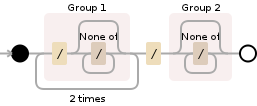与此处发布的问题类似,我正在寻找Java解决方案。
也就是说,如何从字符串中找到第n个出现的字符/字符串的索引?
例如: “ / folder1 / folder2 / folder3 / ”。在这种情况下,如果我要求第三次出现斜杠(/),它会出现在folder3之前,并且我希望返回该索引位置。我的实际意图是从字符的第n次出现开始对它进行子串化。
Java API中是否有任何方便/易于使用的方法,还是我们需要自己编写一个小的逻辑来解决这个问题?
也,
- 我迅速在Apache Commons Lang的StringUtils中搜索是否为此目的支持任何方法,但没有找到任何方法。
- 正则表达式可以在这方面有所帮助吗?
